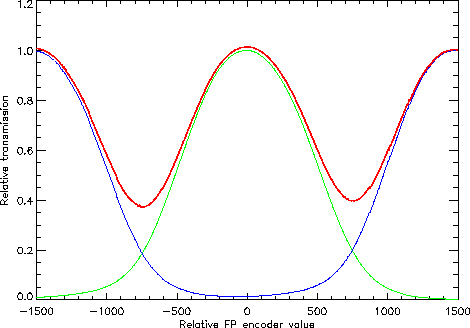
|
When the FP orders are so close together that more than one order is included in the range of wavelengths transmitted by the grating, the photocurrent recorded is an over-estimate of the true value. This is a particular problem on detector LW1 using the long wavelength FP (FPL) and SW2 using the short wavelength FP (FPS).
Therefore a correction to compensate for FP side order contamination is
automatically applied in the LIA routine FP_PROC.

|
This is (automatically) carried out in a routine in FP_PROC
that modifies the shape of the profile that
is removed from the data. This is done individually for each mini-scan based
on the separation of FP orders during that scan. Figure 6.17
shows
an example of the extra transmission due to adjacent FP orders at each point
on the grating profile. The corrected profile compensates for the transmission
in the side orders.

|
The correction works well for the general continuum level where the source spectrum was relatively flat over several FP orders. However, when an adjacent FP order occurred at the wavelength of a strong line, it can result in a false line detection. This is separated from the real line by the distance between FP orders. These are known as `ghost' lines and are not corrected for.